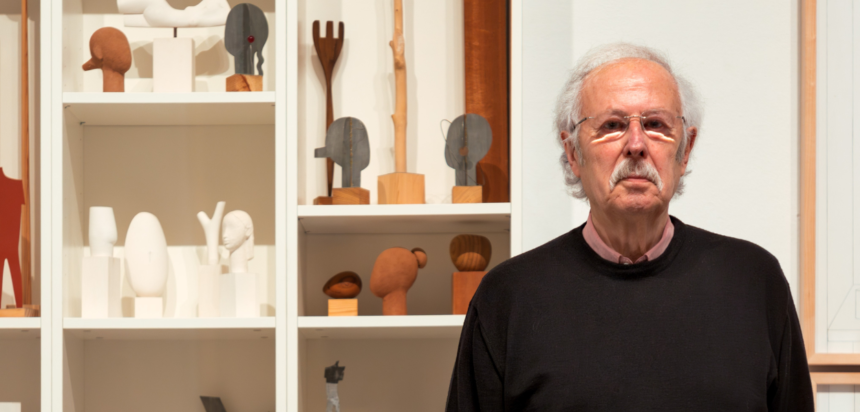- The exhibition reviews the career of more than 50 years of the Valencian author, and will be open to the public until next May.
- The City Council has already recognized the work of Silvestre Moros in 1973 with the Senyera Sculpture Award
- The councilman of Cultural Action, Jose Luis Moreno, has invited the citizenship to know and enjoy the plastic proposals of the exhibition “Silvestre Moros. Work and trajectory of a sculptor”.
The City Museum offers, until next May, the exhibition “Silvestre Moros. Work and trajectory of a sculptor”, a journey through the creations of this artist,
born in Llíria in 1942, who was recognized by the City Council of València with the Senyera Award in 1973. The exhibition includes more than one hundred works by this recognized author, and reviews his career of more than 50 years of daily work in his studio. The Councillor for Cultural Action, José Luis Moreno, has invited the public to enjoy the plastic proposals of this exhibition.
Silvestre Moros, a graduate in Fine Arts specializing in sculpture at the School of Fine Arts of San Carlos of València in 1964, began his career with outstanding national art scene, such as the “Premio Nacional de Escultura
de la Dirección General de Bellas Artes” obtained in 1963 and 1964 respectively, the “Pensionado de Escultura de la Diputación de Valencia” in 1967, the aforementioned “Premio Senyera de Escultura” of the City Council of Valencia in 1973, or the First Prize “Jacomart de
Escultura II Salón de Primavera” in 1975.
From that moment on, his work became part of different museums and collections, and at the same time, he developed an intense teaching work as assistant professor of the “Cátedra de Modelado al Natural” of the School of Fine Arts of Valencia and Professor of Drawing at the National High School.
His artistic career, never interrupted, is characterized by a permanent research and a very personal language recognizable from the beginning. In the words of the artist “I have always tended towards schematism, seeking synthesis as a form of abstraction. I think I have made a personal reading of the form, trying to extract the essential.”
A poetics of his own
The curator of the exhibition, Laura Silvestre, has described the work of Silvestre Moros as “relevant and particularly outstanding, developed in a logical, profound and continuous way, without rest, over more than fifty years, which opts for the purity of forms that flee from the accessory, and manifests in his pieces a poetics of his own, a mastery and a way of doing at the service of his creative interests” In his works, he added, ”the
the subtlety of a curved line of great plasticity and dynamism, draws in the space, with singular simplicity and elegance, the forms full of rhythm and movement, revealing the dynamic spatial power of the sculpture”.
The exhibition presents more than 100 works, including sculptures, drawings and collages, with an itinerary that is the different rooms of the Museum, which show the most significant themes and series of the author’s career, his materials, resources and plastic strategies. In the first of these, a shelf of models of the artist’s studio, as a preparatory material for the creative process of the sculptures, with a polyptych (representation in panels) of drawings that represent it in real size. Then, a series of small notes as a poetic expression of the sensitive experiences of Silvestre Moros.
The following rooms are devoted to different themes of Silvestre Moros’s work, such as his series on female torsos, on heads, his contributions from elements of the natural environment, or the pieces based on everyday sources and references. Finally, in the last room, 5 audiovisual documents are offered on his creative process and his way of understanding art.
The exhibition will remain open to the public at the Museo de la Ciudad, located at the Palacio del Marqués de Campo, at Plaza del Arquebisbe 3, from Tuesday to Saturday, from 10:00 to 19:00 hours; and on Sundays and holidays, from 10:00 to 14:00 hours.
